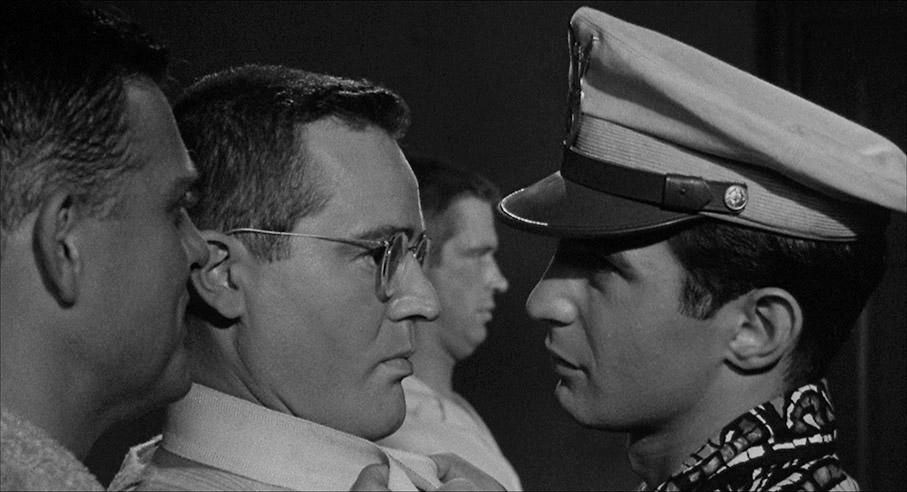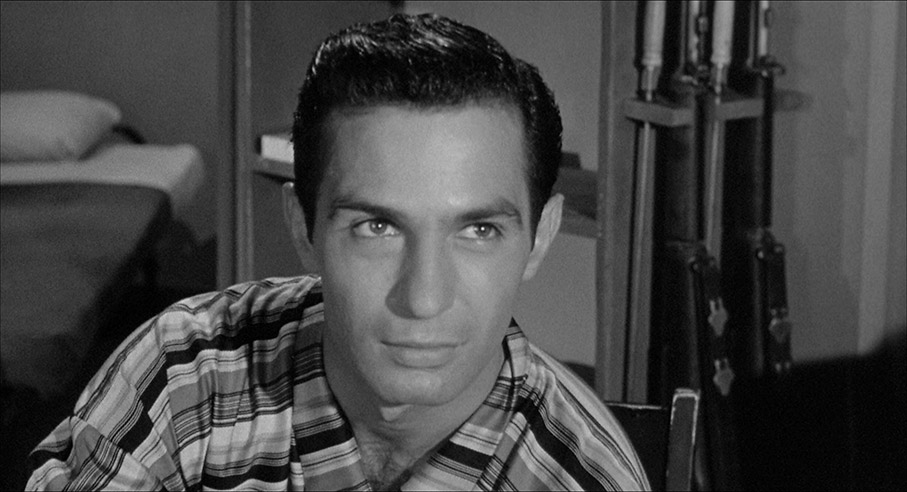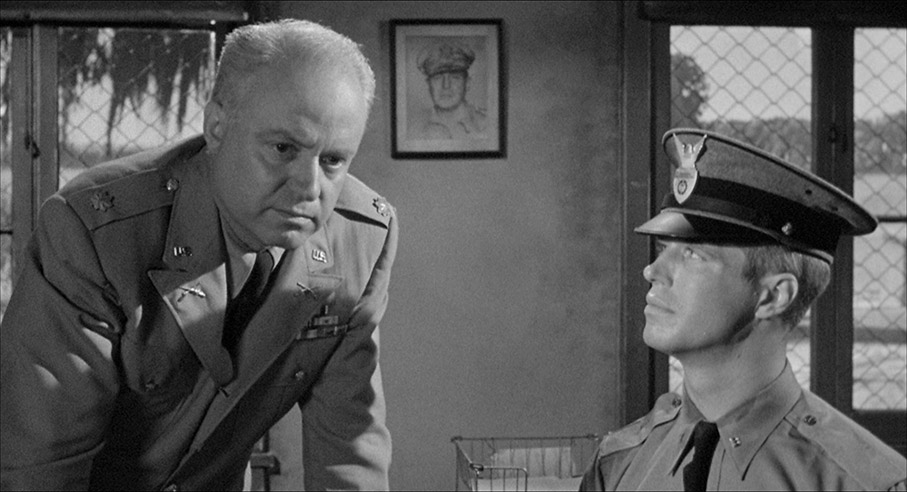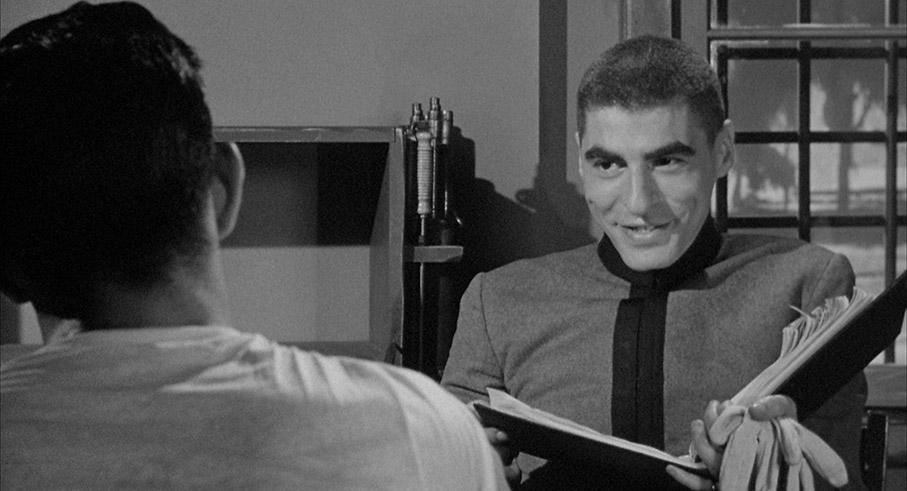|
Not having attended an American military academy or an English public school (rather glad about both, as it happens), the whole concept of 'hazing' is one I've learned about exclusively from literature and film. This process of initiating freshmen into an establishment using rituals designed to humiliate and terrify is probably justified by those who commit and sanction then as harmless fun and the first step in making men out of the victims (and from what I can gather, this is a predominantly male practice), but seems also likely to inflict serious psychological harm on an unfortunate few and even help start the occasional individual on the road to psychopathy. Full Metal Jacket, anyone? It also seems to be an worryingly self-perpetuating cycle, as former victims of hazing, instead of reflecting on how unpleasant the experience was for them, seem to relish the opportunity to make life hell for a new batch of unfortunate arrivals when the time comes for them to dish it out. Power corrupts, and… well, you know the rest. I have to admit that the nearest I have ever come to being hazed is a little pathetic by comparison to the activities that usually qualify for that term. At the start of each year at the film school I attended, a contact sheet of the ID photos of the first year students was pinned up on the wall of the main photographic studio for those in their second and third year to draw and write comments on. The results were hardly traumatising. I merely had Frankenstein monster bolts drawn on my neck – a fair comment for my look at the time – though I did feel a little for the mature student in my class with the pointed beard who had horns drawn on his head and the words “I eat babies” written under his picture.
The intriguingly titled The Strange One is set in an military academy in the American South and written by Calder Willingham from his own novel End as a Man and stage play adaption of the same name, and was apparently inspired by his own experience at just such an institution. With the sort of economy you'll find evidence of throughout, the film introduces its main characters and their pecking order in the first few minutes of the opening scene. After a patrol has established that everyone is in their rooms and bedded down for the night, senior cadets Jocko De Paris (Ben Gazzara) and Harold Koble (Pat Hingle) pat a visit to first-year cadet Maynard Simmons (Arthur Storch) and freshman Robert Marquales (George Peppard), seemingly for the express purpose of intimidating the morally uptight Simmons as part of the Academy's hazing ritual. Even before De Paris and Koble have entered the room, Simmons and Marquales have jumped out of bed and are standing to attention with worried looks on their faces, negating the need for verbal confirmation about who occupies the nominal position of authority here. Both De Paris and the slightly more reasonable Koble certainly give Simmons a hard time, but the true reason for their after-hours visit turns out to be to press Marquales into taking part in a secret poker game that De Paris has set up for the express purpose of fleecing money from football star recruit Roger Gatt (James Olson) whilst Simmons plays bartender and plies him with booze. It turns out, however, that this is just the first part of a far more devious scheme on De Paris's part, one involving Academy officer Major Avery (Larry Gates) and his cadet son George (Geoffrey Horne), who occupies the adjacent room.

Right from this first scene it seems clear that despite being an unpleasant individual with an inflated sense of his own power and importance, De Paris is absolutely the character around whom the film will revolve and who is set to be its key point of interest. As played by Ben Gazzara in his first film role, De Paris is a compelling antihero, a sadistic and manipulative bastard so confident of his abilities and authority over others that he never feels the need raise his voice or lose his cool, his instructions, insults and threats somehow all the more intimidating for being so calmly and even casually delivered. It probably helps that Marquales, the good guy of the piece and without doubt a decent human being, is a bit too straight-laced and that Simmons is a bit of a cartoon dork, spectacled, buck-toothed (I was not in the least surprised to learn that those teeth were false) and with a fear of women and a moral objection to the the idea of even handling an alcoholic beverage. That said, it's still easy to feel for him when De Paris goads a drunken Gatt into beating him with a broom, though once he and Marquales are alone the next day he becomes insufferably judgemental about his roommate's reluctance to turn De Paris in, despite his own reluctance to do likewise.
The Strange One was both the first and penultimate feature directed by Jack Garfein, a former actor who became a director at New York's famed Actors Studio and had already scored a critical hit with the stage adaptation, which featured many of the actors here in the same roles. It's not hard to see what first attracted Garfein to the work in the first place, quite apart from the sparky intelligence of Calder Willingham's dialogue. As a holocaust survivor (he was the only member of his family to survive the Auschwitz extermination camp), he clearly saw potential in exploring how a dangerous and morally bankrupt man could reach a position of power through his charisma, self-confidence and lack of empathy for others alone. It's a theme that resonates every bit as strongly today, when whole countries are governed not by politicians committed to improving the lives of their people but by self-serving sociopaths who are skilled in manipulating their image and the viewpoint of those who mysteriously fall under their spell. As is often the case with such individuals, De Paris is almost always punching down, only targeting those over whom he has unofficial but institutionally sanctioned superiority. The one exception to this is Perrin McKee (Paul E. Richards), a wannabe writer whose continual pestering of De Paris appears to be born of a deep attraction too him, something that irritates the hell out of the otherwise calmly unflustered De Paris. It's a relationship whose unmistakable homosexual overtones were definitely ahead of their time (although nowhere near as upfront as they are in the novel) but that have aged a little by the presentation of Simmons as an over-sensitive and slightly clingy queen, although I'd argue that he's nowhere near as blatantly so as some notable others in 60s and 70s American cinema.

In common with Alex in A Clockwork Orange, there's a dichotomy to De Paris that leaves you wanting to see him get his comeuppance whilst simultaneously enjoying every moment he appears on screen. This is down in no small part to Ben Gazzara's central performance, a frankly dynamite debut in a role that he played on stage but nearly lost out in the film to Actors Studio colleague James Dean. Dean was a fine and charismatic actor, but I just can't imagine him being half as effective as Gazzara is here. It's a performance that I've seen more than once described as feline, while the actor himself admits he played De Paris as someone who moves more like a cat than a human. Performance-wise, he's not alone here. With a cast drawn primarily from Actors Studio members (including familiar faces Peter Mark Richman and Clifton James as Colonels Corger and Ramey respectively), many of whom had already honed their performances in the stage version, there's not a remotely substandard performance here, with even characters that the passing of time have rendered just a tad stereotypical still compellingly played.
A grippingly handled character drama with sturdy and still-relevant political undertones, The Strange One does leave a few questions teasingly unanswered, the most commonly picked up on being what the true motivation is for De Paris's behaviour and actions within the timeframe of the film, but personally I'm happy to be free to provide my own answers there. There's certainly a strong suspicion that De Paris, like so many of his ilk, seems driven in part by the enjoyment of bullying those not in a position to kick back and the feeling of power it gives him, but he is also wily enough to know how to manipulate them into committing acts over which he has control but can later distance himself from by claiming not to have actually done the deed himself. As is pointed out on the special features, this does cast him as something of a Svengali figure, but it's worth noting that the same could be said about a certain Charles Manson, who has the dubious distinction of being labelled a serial killer despite having brainwashed others into doing his killing for him. In some respects, De Paris is a potential authoritarian politician in the making, though his fondness for finery – as illustrated by his colourful casual clothing and his use of an elegant cigarette holder – is amusingly undercut by fact that the Messerschmidt K200 bubble car he drives is about as far from the power statement American classic car as you could ever imagine. This dictatorial reading of De Paris also puts an interesting slant on the climactic scene (I'm going to avoid getting too specific but feel free to skip ahead to avoid even getting a hint of a spoiler), which does seem to suggest that revolution is an appropriate response to authoritarianism, but also hints that true and effective rebellion needs to be more than a symbolic gesture.
Although featuring several daylight-set scenes, there's an almost overcast feel to much of The Strange One, as if the image is reflective of the discomfort of the film's more put-upon characters and this is nicely showcased by a strong 1.85:1 1080p transfer from a Sony HD remaster. Detail is clearly and often crisply defined, though the odd shot has a softer feel, perhaps the result of a restoration from more than one source. The contrast range is generally well balanced, even on the darker scenes (and there are a fair few of those), with beefy black levels and decent shadow detail. Film grain is visible throughout and the image has been cleaned of dust spots, scratches or any other sundry damage.

The Linear PCM 1.0 mono soundtrack is also in solid shape, with clear reproduction of the dialogue (kind of important here) and Kenton Hopkins' jazzy score, with no distracting background hiss, fluff or crackle.
Optional English subtitles for the hearing impaired are available.
You also have the option to watch the film as The Strange One or under the UK release title of End as a Man, which was the title of the book and the play on which the film was based, of course. As far as I'm aware, the only difference between them is the title.
Audio Commentary with Nick Pinkerton
Critic, writer and film historian Nick Pinkerton delivers a thorough analysis of key aspects of the film and biographical information on many of those involved in its making, both in front and behind the camera, with particular emphasis on the stellar cast. He highlights just about every subtle expression of the film's homoerotic subtext, including a few that I hadn't picked up on (I seem to have a blind spot when it comes to symbolically phallic objects), outlines some of the main differences between the film and its source material, provides some useful background on the Actors Studio and its influence, and plenty more. He does discuss the elements that have not aged so well, and expresses his bemusement at the make and model of De Paris's car by inviting anyone who knows what it is to email him with the answer. I don't have his email address so made a special point of identifying it in the review above. Hope that's of some help.
Jack Garfein: Finding Direction (10:11)
Director Jack Garfein, who died in December 2019, kicks off this welcome interview with the sobering details of how his whole family were murdered in Auschwitz and reveals that he escaped a similar fate several times due to the unspecified efforts of his extraordinary-sounding mother. The story of how he started out wanting to become an actor only to be steered into directing and producing Calder Williamson's play after no-one else would touch it is a fascinating one, as is the story of why he ended up only making two dramatic features.
Ben Gazzara Remembers 'The Strange One' (10:38)
The elderly but still hugely engaging Gazzara (whom we sadly lost back in 2012) recalls getting his first taste for acting at the age of 12, following a the same thespian path as Jack Garfein, and actively seeking the role of De Paris in the stage production and how he interpreted the character. He recounts a few specifics about the making the film, including being slapped in the face numerous times by an actor who hadn't yet learned how to do so without inflicting pain, and while he also talks about the issues that ultimately cut short Jack Garfein's film directing career, the story he tells is somewhat different to the one told by the director in the previous extra. It's quite possible, of course, that a combination of both detailed events was ultimately responsible.

Theatrical Trailer (2:04)
“The strange one is a strange one…is a strange one…is a strange one…is a strange one,” a selection of voices on the soundtrack inform us unhelpfully as a series of potentially plot-spoiling clips unfold and a couple of captions are thrown up to remind us of when the film was made and marketed.
Image Gallery
16 screens of crisp promotional stills and posters.
Booklet
Leading the way here is a solidly researched essay examining the journey of text from stage to screen and an examination of the themes and structure of the film. There are some fascinating observations and opinions here, one of my favourites being, “The unsatisfying climax thus perfectly suits a work so deeply immersed in dissatisfaction.” Chew on that. Extracts from interviews with Ben Gazzara from The New York Times and a rather confrontational reporter from The Washington Post follow, after which are some choice snippets from an interview with Jack Garfein from a 1963 issue of Film Quarterly. Finishing things off are three excepts from contemporary reviews, and for a change the British Monthly Film Bulletin is a tad kinder to the film than the American journals quoted (the same two that interviewed Gazzara, as it happens), but the journal still found a way to praise the film's brilliance whilst simultaneously calling it a failure. Ay caramba. Also included are credits for the film, promotional photos and a reproduction of the poster, which makes De Paris look like an extra from William Friedkin's Cruising.
I found myself quickly and thoroughly hooked by The Strange One, so much so that the small gripes I had with two of the characters didn't really become gripes until I'd finished watching the film, though I will admit to being curious about Simmons' teeth from the moment he first flashed them. Smart dialogue, solid direction and terrific performances all round, especially from Ben Gazzara in an absolute belter of a film debut. A typically strong transfer and a solid set of extras make this another welcome release from Indicator. Recommended.
|